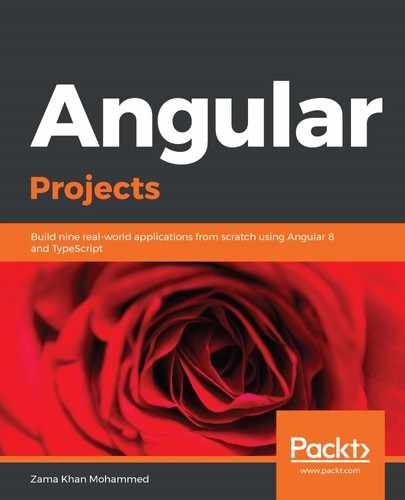There are a number of text conventions used throughout this book.
CodeInText: Indicates code words in text, database table names, folder names, filenames, file extensions, pathnames, dummy URLs, user input, and Twitter handles. Here is an example: "TypeScript has a special keyword called interface, which doesn't exist in ECMAScript."
A block of code is set as follows:
interface ICar {
make: string;
model: string;
year: number;
vin?: string;
}
When we wish to draw your attention to a particular part of a code block, the relevant lines or items are set in bold:
@Component({
...
})
export class AppComponent {
...
handleToggleCard(id: number) {
const flash = this.flashs.find(flash => flash.id === id);
flash.show = !flash.show;
}
}
Any command-line input or output is written as follows:
> yarn add bootstrap-scss
Bold: Indicates a new term, an important word, or words that you see onscreen. For example, words in menus or dialog boxes appear in the text like this. Here is an example: "Afterward, we need to go to the Audits tab in developer tools, as follows."
